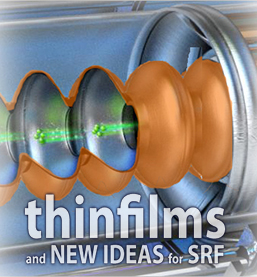Speaker
Description
Nb3Sn is considered as a potential candidate for superconducting radiofrequency (SRF) cavities for particle acceleration due to its higher critical temperature of 18.3 K and higher superheating field of 400 mT. We fabricated Nb3Sn films by multilayer sputtering and the film properties were optimized by varying the fabrication conditions (multilayer thickness, substrate temperature, annealing temperature, and annealing time). The films were characterized by scanning electron microscopy, X-ray diffraction, atomic force microscopy, energy-dispersive X-ray spectroscopy, and transmission electron microscopy. The DC superconducting properties of the films were characterized by a four-point probe technique down to cryogenic temperature. RF surface resistance of the films were characterized by using the surface impedance characterization system at Jefferson Lab. The films had a DC superconducting critical temperature up to 17.93 K and an RF superconducting transition at 17.2 K. To extend this process to SRF cavities, a cylindrical magnetron sputtering system is designed to fabricate Nb3Sn by multilayer sputtering inside a 2.6 GHz single-cell SRF cavity.

